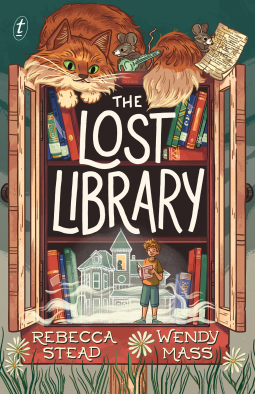Children’s book about secrets, community and libraries
I received a copy of this book courtesy of the publisher.

“The Lost Library” by Rebecca Stead and Wendy Mass is a children’s book about a young boy called Evan who discovers a street library that appears one day in his town with a large ginger cat watching over it. Intrigued by books that he discovers inside, Evan and his best friend Rafe try to uncover the mystery behind the library, the town’s history and a tragedy that happened many years ago.
This is a really sweet book that gently explores how a traumatic event can affect a small town, and how community can grow in its wake. I had my own street library for years before moving house, and it is absolutely lovely seeing how the community engages with it by taking and leaving books. I thought that Stead and Mass handled the tension between Evan’s curiosity and the town’s reluctance to discuss what happened to the town library really well. There were lots of nice touches throughout the book like the street library being added to, everyone calling the cat by a different name and Rafe good-naturedly adhering to his parents’ very strict rules.
I think the only part I wasn’t completely sold on was the story being told from three perspectives (Evan, the cat and the ghostly Al) and the addition of some supernatural elements like ghosts and sentient mice. Even though I usually do like a bit of magic realism, I felt like this story was strong and sweet enough without these additions and I think sticking to realism would have made it even more impactful.
A really nice story about small town communities and the power of libraries: no matter the size.





